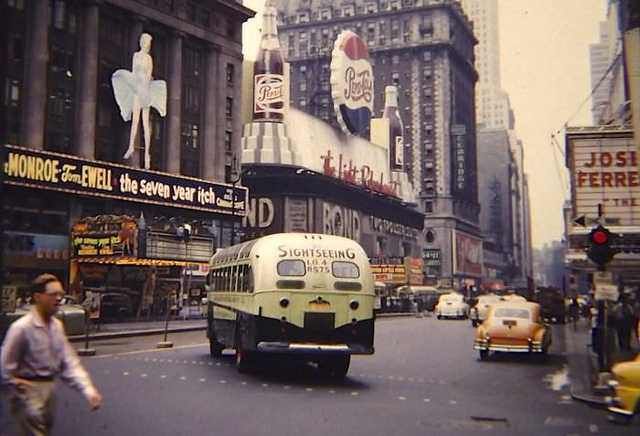The Omnipresence of Advertising: How Marketing Permeates Modern Life
BUSINESS


New Lyons, December 8, 2024 — From the moment we wake up to the sound of the radio, to the billboards we pass on the way to work, advertising has become woven into the fabric of our daily lives. It shapes our desires, influences our choices, and even helps define what we consider “normal” in our culture. But how did marketing manage to seep so deeply into our everyday world?
Take a stroll down Main Street in New Lyons, and you’re met with a kaleidoscope of ads. Neon signs flicker above shopfronts, while posters cover every available wall, promoting everything from the newest cars to the latest household gadgets. At the Luxe Cinema, a bright marquee shows off images of upcoming films, luring people in with promises of romance, adventure, and mystery. “It’s hard to imagine a time when ads weren’t everywhere,” says George Whitman, owner of Whitman’s Bookstore. “They’ve become part of the scenery—like urban art, almost.”
The growth of advertising has gone hand-in-hand with the rise of consumer culture. In the post-war boom, companies found new ways to reach customers who were eager to embrace modern conveniences. “Advertising changed from just listing products to creating emotional connections,” says Dr. Emily Foster, a historian at New Lyons University. “It’s not just about selling a product anymore—it’s about selling a lifestyle, an aspiration.” Radio jingles started embedding brand names into our routines, and print ads in magazines used bold visuals and catchy slogans to grab attention. Television, still a novelty, brought moving images right into people’s homes. Remember the “Lucky Strike” commercials? Smiling families and upbeat music, reinforcing brand loyalty with every tune.
Underneath the creative sparkle, there’s a serious understanding of human psychology at play. Advertisers use psychological insights to make sure their messages hit home. “We tap into desires, fears, dreams. It’s all about connecting with people on a personal level,” says Raymond R. Lech, a marketing executive at Rhodes & Clark Advertising Agency.
While advertising drives economic growth, it also raises some big questions about consumerism and authenticity. “The constant bombardment creates a culture of endless desire. It can lead to dissatisfaction and materialism,” warns Jason Mayfield, a sociology professor. But advertising can also do good—it reflects, and sometimes even shapes, our social values. Local businesses in New Lyons recently teamed up for the “Stay in School” campaign, with posters and radio ads encouraging kids to complete their education. The program’s already showing promising results.
Today, advertisers know that personalization is key. Direct mail, customized messages, and local engagement help create a sense of connection. At the Farmers’ Market, for instance, vendors use handwritten signs and friendly interactions to make customers feel welcome. “People appreciate authenticity,” says Rebecca Hill, who sells homemade jams. “A smile and a genuine conversation—that’s what makes the difference.”
Of course, not everyone is on board with this advertising-saturated world. Movements advocating for minimalism and mindful consumption are growing. Artist Verron Plymouth, known for his impressionist works, weaves critiques of commercialism into his paintings, challenging viewers to question the world around them. Some cities are even exploring ways to regulate outdoor advertising, hoping to preserve the city’s aesthetic and reduce visual clutter.
The advertising world is constantly evolving. New technologies—like color television and even some futuristic ideas—hint at what’s to come. “Imagine ads that respond to your preferences, that engage you in a real dialogue,” says Lech from Rhodes & Clark. “The future is about connection and interaction on a whole new level.”
For consumers, awareness is essential. Knowing how advertising works can help people make more informed choices. “I teach my kids to think critically about what they see and hear,” says Charlotte Smith, a mother of three. “Ads aren’t necessarily bad, but we need to be mindful.” Schools in New Lyons are even introducing media literacy programs, helping the next generation understand and navigate this branded world.
Advertising’s presence is a defining feature of modern life. It entertains, informs, persuades, and, sometimes, overwhelms. It’s a powerful force that reflects both the creativity and the challenges of a consumer-driven society. As we navigate this world, the relationship between advertisers and consumers continues to shape our experiences, our values, and, to some extent, our identities. The real challenge lies in using this power responsibly, enhancing lives without overshadowing the human connections that truly matter.
Sylvia Hartman is a cultural commentator for the NL Sentinel. Her work explores the intersections of media, society, and everyday life. Reach her at shartman@nlsentinel.com or join the conversation with #MarketingInLife.
